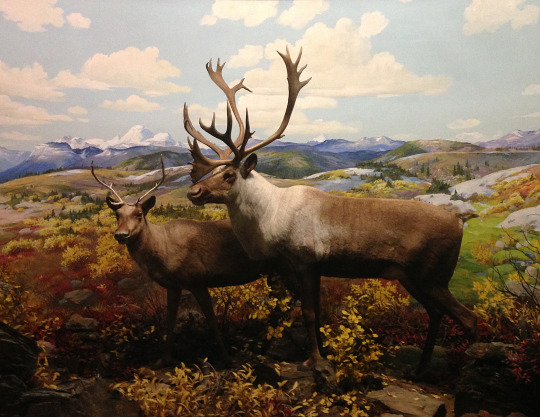by Suzanne B. McLaren
Yes! Reindeer are real mammals. In fact, reindeer are the same species as caribou (Rangifer tarandus). The species is widespread throughout northern parts of the Northern Hemisphere. In North America, the wild subspecies are called “caribou.” In Eurasia, both wild and domesticated animals are called reindeer.
The First Nations People of Canada have depended upon caribou in the same way that tribes of the North American plains depended upon the bison – for meat, and as a source of clothing and various household goods cleverly derived from the animal’s bones, tendons, horns, and fur. However, there was never an attempt to domesticate the animals in North America. In parts of Eurasia, people began to domesticate reindeer about 2,000 years ago. The domesticated animals have evolved to be shorter and stockier than the wild animals. North American subspecies of caribou by contrast, are about as large an elk. There are several subspecies found in Canada, such as the barren-ground caribou living in the tundra, which is known to migrate as much as 800 miles from one seasonal feeding ground to another. At Carnegie Museum of Natural History, visitors can observe the barren-ground caribou and the mountain caribou in dioramas that show their natural habitats in the Hall of North American Wildlife. There is additional information about caribou in Polar World: Wykoff Hall of Arctic Life.


The domesticated reindeer of Eurasia are herded by people living in Arctic regions. These reindeer provide food, clothing, and even shelter for the people with whom their lives are intertwined. Clement Moore’s famous story, ‘Twas the Night Before Christmas’ was written in 1837 at a time when the people of Lapland, in northern Finland, would have been using reindeer to draw large sleighs or sledges, just as other people might use horses.
Unlike other members of the deer family, both male and female caribou and/or reindeer have antlers during part of the year. Large bucks begin developing antlers in March. The antlers of adult males may reach lengths of three to four feet and will be dropped by early November. Young males develop much smaller racks, which are occasionally retained as long as the following February. The antlers of adult females are of similar size to those of young males. A doe will begin to develop her antlers in June and carry them until the following April or May. Timing of antler loss in females usually coincides with the birth of their young. Based on this timing, it is clear that Santa’s reindeer must either be young males or adult females rather than adult males, because the larger males do not have antlers by Christmas time!
Reindeer can move at different speeds from the most common slow trot to a rapid gallop that can reach speeds of up to forty-nine miles per hour over short bursts. A unique characteristic of this animal is a clicking sound that is made by tendons moving over bones in the feet. They are excellent swimmers but have never been known to fly.
Suzanne B. McLaren is the Collection Manager in the Section of Mammals at Carnegie Museum of Natural History. She lives on the Northside with her husband Andy. Museum employees are encouraged to share their unique experiences from working at the museum.
Related Content
A Perfect Mineral for the Christmas Season
Carnegie Museum of Natural History Blog Citation Information
Blog author: McLaren, Suzanne B.Publication date: December 18, 2018
